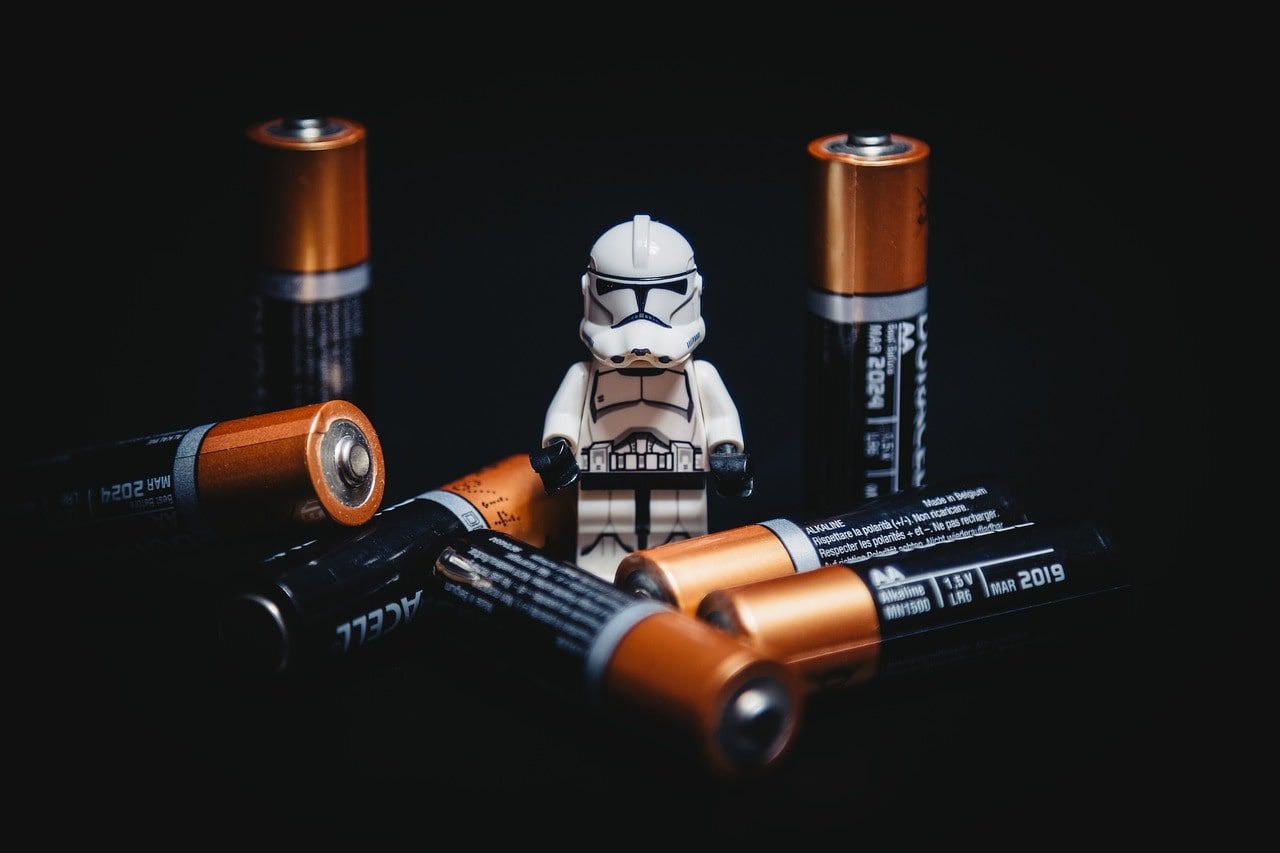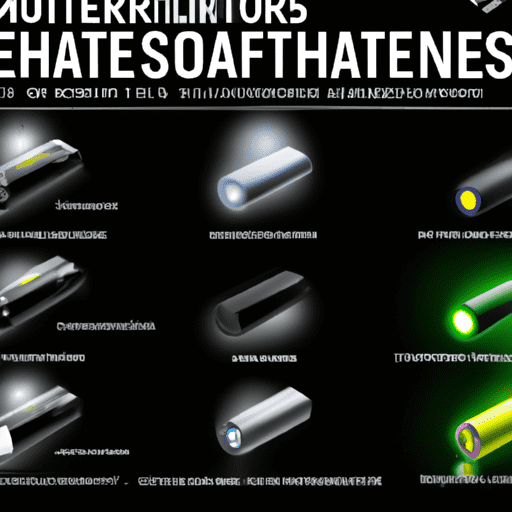

Have you ever wondered what type of batteries are used in most night vision devices? Well, you’re in luck because this article aims to uncover the common batteries that power these devices. From goggles to scopes, night vision technology offers a whole new level of visibility in low-light conditions. So, let’s explore the batteries that keep these devices up and running, allowing us to see in the dark with astonishing clarity.
1. Battery Types
When it comes to powering our electronic devices, batteries play a crucial role. They provide the energy necessary to keep our devices running smoothly. In this article, we will explore different types of batteries and their characteristics. There are two main categories of batteries: disposable batteries and rechargeable batteries. Let’s dive in and learn more about each type.
1.1 Disposable Batteries
Disposable batteries, also known as primary batteries, are designed for single use and cannot be recharged. They are widely used in various devices such as remote controls, flashlights, and alarm clocks. Let’s take a closer look at some common types of disposable batteries.
1.2 Rechargeable Batteries
Rechargeable batteries, as the name suggests, can be recharged multiple times. They are environmentally friendly and cost-effective in the long run. These batteries are commonly used in devices that require frequent use and high power consumption, such as digital cameras, smartphones, and electric vehicles. Now, let’s explore different types of rechargeable batteries.
2. Disposable Batteries
Disposable batteries come in various sizes and shapes, each with its own specific uses and advantages. We will discuss three types of disposable batteries: AA batteries, CR123A batteries, and coin cell batteries.
2.1 AA Batteries
AA batteries are one of the most common and widely used types of batteries. They are cylindrical in shape and usually have a voltage of 1.5 volts. AA batteries are often found in devices like TV remote controls, portable radios, and toys. They are easily accessible and can be found in most convenience stores.
2.2 CR123A Batteries
CR123A batteries, also known as camera batteries, are typically used in high-drain devices such as digital cameras and flash units. These batteries have a longer shelf life and provide steady power output, making them ideal for devices that require consistent performance over an extended period.
2.3 Coin Cell Batteries
Coin cell batteries, also called button batteries, are small and round in shape. They are commonly used in devices that need a long-lasting power source, such as watches, calculators, and small electronic devices. Coin cell batteries are available in different sizes, with CR2032 and CR2016 being the most commonly used.
3. Rechargeable Batteries
Rechargeable batteries offer the convenience of being able to reuse them multiple times after recharging. They are environmentally friendly and can save you money in the long run. Let’s explore two common types of rechargeable batteries: lithium-ion batteries and nickel-metal hydride (NiMH) batteries.
3.1 Lithium-Ion Batteries
Lithium-ion batteries are widely used in smartphones, laptops, and electric vehicles. They offer high energy density, which means they can store more power in a smaller, lighter package. Lithium-ion batteries also have a low self-discharge rate, allowing them to hold their charge for longer periods when not in use.
3.2 Nickel-Metal Hydride (NiMH) Batteries
NiMH batteries are commonly used in devices such as digital cameras, cordless phones, and portable gaming devices. They have a higher energy density compared to disposable alkaline batteries, allowing them to provide longer-lasting power. NiMH batteries are known for their ability to hold a charge well and have a lower environmental impact compared to other battery chemistries.
4. AA Batteries
AA batteries are widely used in various devices and come in different versions depending on their chemistry and intended use. Let’s explore two common types of AA batteries: standard AA batteries and lithium AA batteries.
4.1 Standard AA Batteries
Standard AA batteries, also known as alkaline batteries, are the most common type of AA batteries available. They are affordable and can be found in most stores. Alkaline batteries have a relatively long shelf life and provide a steady power output for many everyday electronic devices.
4.2 Lithium AA Batteries
Lithium AA batteries are an alternative to standard alkaline batteries. They offer a longer shelf life and higher energy capacity, making them ideal for devices that require a high power output over an extended period. Lithium AA batteries are often used in digital cameras, flashlights, and medical devices.
5. CR123A Batteries
CR123A batteries, also known as camera batteries, are commonly used in devices that demand high power output and minimal self-discharge. There are two variations of CR123A batteries: primary CR123A batteries and rechargeable RCR123A batteries.
5.1 Primary CR123A Batteries
Primary CR123A batteries are non-rechargeable and provide consistent power output. They are often used in devices that require a constant power supply, such as security systems and night vision devices. Primary CR123A batteries have a long shelf life and are known for their reliability.
5.2 Rechargeable RCR123A Batteries
RCR123A batteries, also known as rechargeable CR123A batteries, are a more cost-effective and environmentally friendly option. They are perfect for devices that require regular recharging, such as digital cameras and flashlights. Rechargeable RCR123A batteries eliminate the need for frequent battery replacements and offer extended usage time between charges.
6. Coin Cell Batteries
Coin cell batteries, often used in small electronic devices, range in size and chemistry. The two most commonly used coin cell batteries are CR2032 and CR2016.
6.1 CR2032 Batteries
CR2032 batteries are widely used in devices such as watches, key fobs, and fitness trackers. These batteries offer a reliable and steady power supply for small, low-power devices. CR2032 batteries have a long shelf life and are easily replaceable due to their popularity.
6.2 CR2016 Batteries
CR2016 batteries are another popular choice for small electronic devices that require a compact power source. They are commonly used in devices like calculators, remote controls, and some medical devices. CR2016 batteries are known for their compact size, making them suitable for slim and lightweight devices.
7. Lithium-Ion Batteries
Lithium-ion batteries are widely used due to their high energy density and various applications. Let’s explore two common types of lithium-ion batteries: 18650 batteries and 16340 batteries.
7.1 18650 Batteries
18650 batteries are cylindrical rechargeable lithium-ion batteries commonly used in devices that demand high capacity and continuous power supply. They are often found in laptops, power tools, and electric vehicles. 18650 batteries offer a high energy density, long cycle life, and stable voltage output.
7.2 16340 Batteries
16340 batteries, also known as CR123A-sized batteries, are rechargeable lithium-ion batteries commonly used in high-drain devices such as flashlights and laser pointers. These batteries are smaller in size compared to 18650 batteries, making them suitable for compact devices that require higher power output.
8. Nickel-Metal Hydride (NiMH) Batteries
Nickel-metal hydride (NiMH) batteries are a popular choice for devices that require frequent recharging and moderate power output. Let’s explore two common types of NiMH batteries: AA NiMH batteries and 9V NiMH batteries.
8.1 AA NiMH Batteries
AA NiMH batteries are widely used as a rechargeable alternative to disposable AA batteries. They offer a higher energy density, making them last longer in high-drain devices. AA NiMH batteries are often used in digital cameras, wireless gaming controllers, and handheld devices.
8.2 9V NiMH Batteries
9V NiMH batteries are commonly used in devices like smoke detectors, wireless microphones, and portable audio equipment. They offer a higher capacity compared to traditional alkaline 9V batteries, making them a cost-effective and eco-friendly option. 9V NiMH batteries are rechargeable, reducing waste and ensuring a continuous power supply.


9. Factors Affecting Battery Life
Battery life can vary depending on several factors. Let’s explore three key factors that can affect the overall performance and longevity of batteries: device power consumption, battery capacity, and environmental conditions.
9.1 Device Power Consumption
The power consumption of a device directly impacts the battery life. Devices that require more power, such as high-performance electronics or devices with large screens, will drain the battery faster. Adjusting settings and using power-saving modes can help extend battery life in these situations.
9.2 Battery Capacity
Battery capacity refers to the amount of energy a battery can store. Batteries with higher capacities will typically last longer before requiring a recharge or replacement. Understanding the capacity of a battery and aligning it with the power requirements of your device is essential for optimizing battery life.
9.3 Environmental Conditions
Environmental conditions, such as temperature and humidity, can affect battery performance. Extreme temperatures, both hot and cold, can decrease battery capacity and overall lifespan. It is important to store and use batteries within the recommended temperature range to maximize their performance and longevity.
10. Battery Life Expectancy
Battery life expectancy refers to the average lifespan of a battery before its capacity significantly diminishes. While manufacturers provide specifications regarding battery life, it can vary based on several factors like usage patterns and operating conditions. Let’s explore two common aspects related to battery life expectancy: average battery life and manufacturers’ specifications.
10.1 Average Battery Life
Average battery life is a measure of how long a battery typically lasts under normal usage conditions. This can vary depending on the type of battery and the device it powers. It is important to note that battery life can also be influenced by factors such as device settings, usage patterns, and environmental conditions.
10.2 Manufacturers’ Specifications
Manufacturers often provide specifications regarding battery life for their products. These specifications give an estimated duration of battery life, usually based on specific usage conditions outlined by the manufacturer. While manufacturers’ specifications can provide a general idea of battery performance, it is essential to consider real-world usage and individual device settings.
In conclusion, understanding different battery types is essential for choosing the right power source for your electronic devices. Whether you opt for disposable batteries or rechargeable batteries, considering factors like capacity, power consumption, and environmental conditions can help maximize the performance and longevity of your batteries. Remember to always follow the manufacturer’s guidelines for optimal battery usage and disposal.
How Do I Minimize Noise When Using Night Vision For Hunting?
What Safety Precautions Should I Take When Using Night Vision Equipment?




